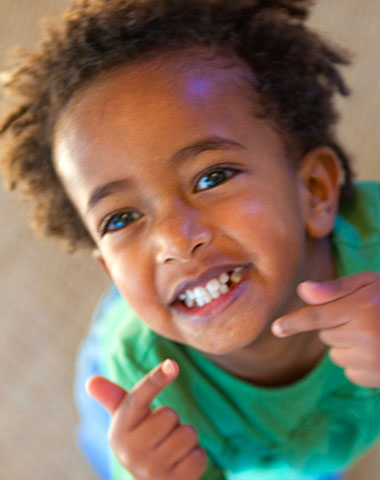
It is helpful to assess the child’s home care regimen. If your child does not have good oral hygiene and does not brush adequately, plaque can build up on the teeth, causing them to look darker. For some kids, a spin brush can help keep their teeth cleaner, as the spin brush oscillates and can be more effective in removing plaque.
But even kids who brush well can have yellow teeth. For those kids, the cause is likely due to the materials that make up the tooth, i.e, the differences between the amount of enamel and dentin in adult teeth versus baby teeth. The enamel is the outer white layer of the tooth, and the dentin is the inner yellow layer. In adult teeth, the proportion of enamel to dentin is lower, which can cause those teeth to look yellower. Conversely, in baby teeth, the proportion of enamel to dentin is much higher, making those teeth look whiter. In kids who have a mixed dentition, meaning they have both baby and adult teeth present, these differences become much more obvious. This is because you now have small white baby teeth right next to large yellowish adult teeth.
The best thing to do is be patient and wait for all of the adult teeth to erupt and for the tooth composition and color of the adult teeth to change as the child grows older. If by age 13, the teeth haven’t lightened much, it is okay to consider the use of whitening strips to achieve a whiter tooth color. At home whitening with custom trays and gel can be safe for children age 16 and up.







